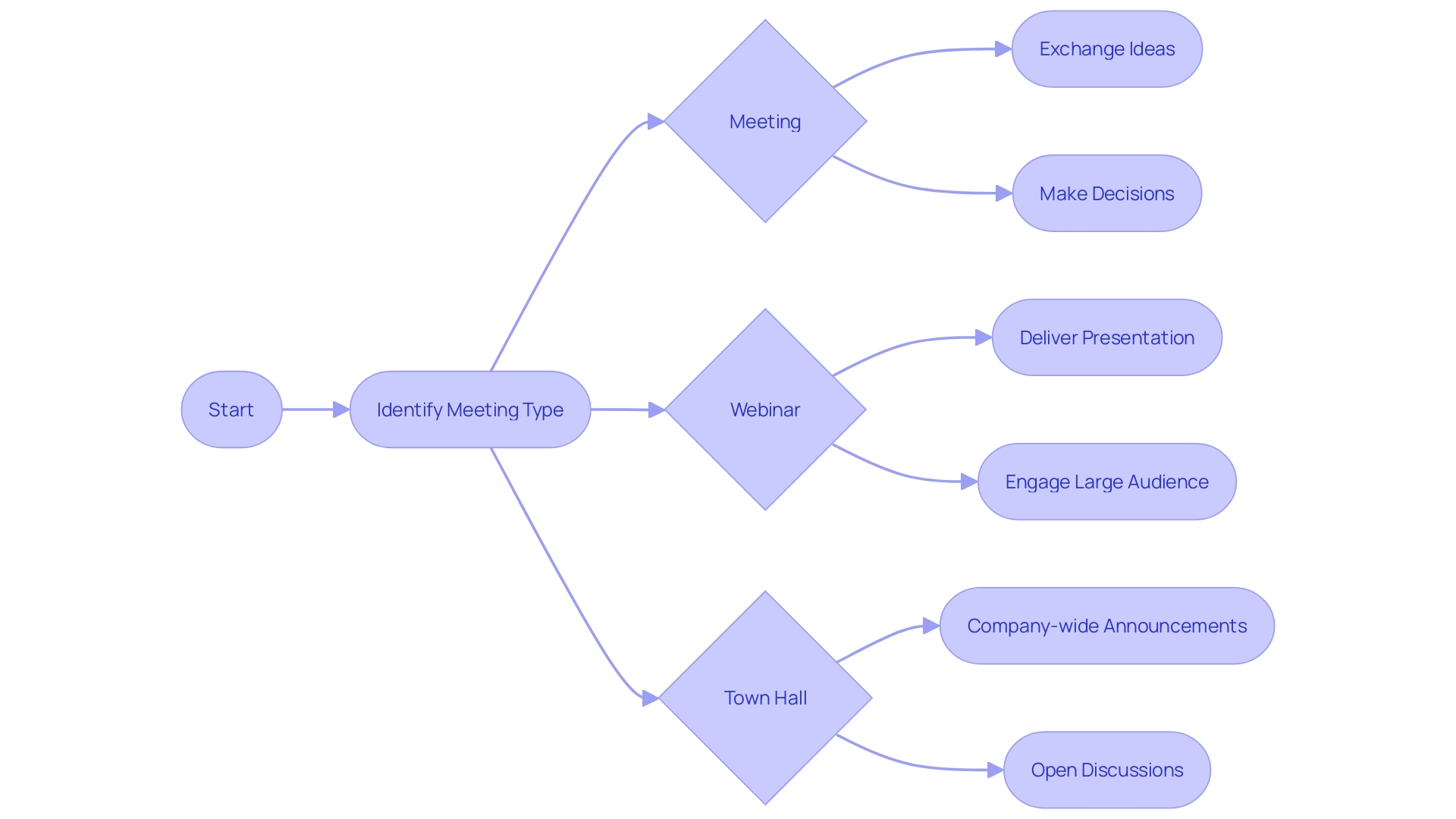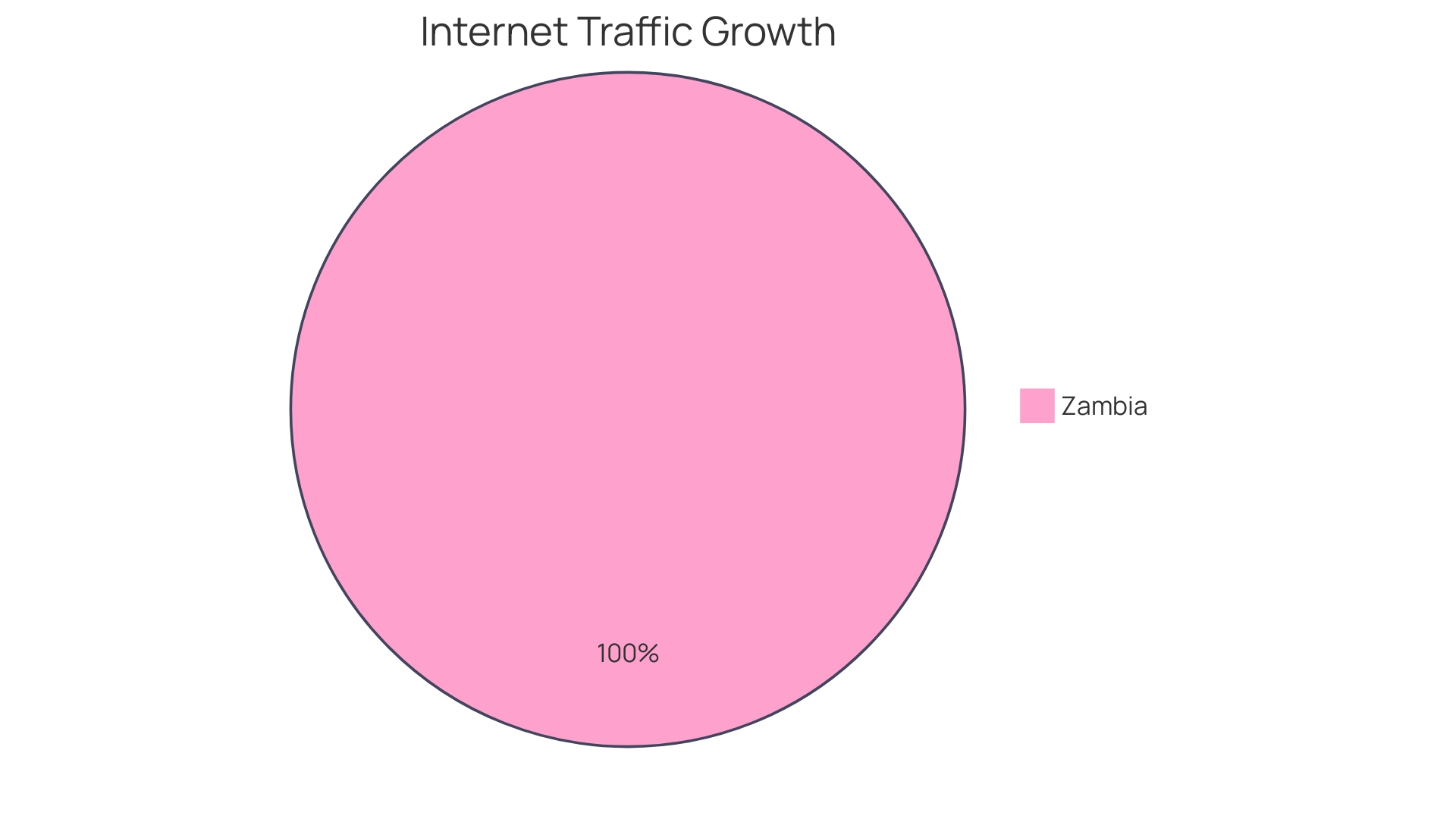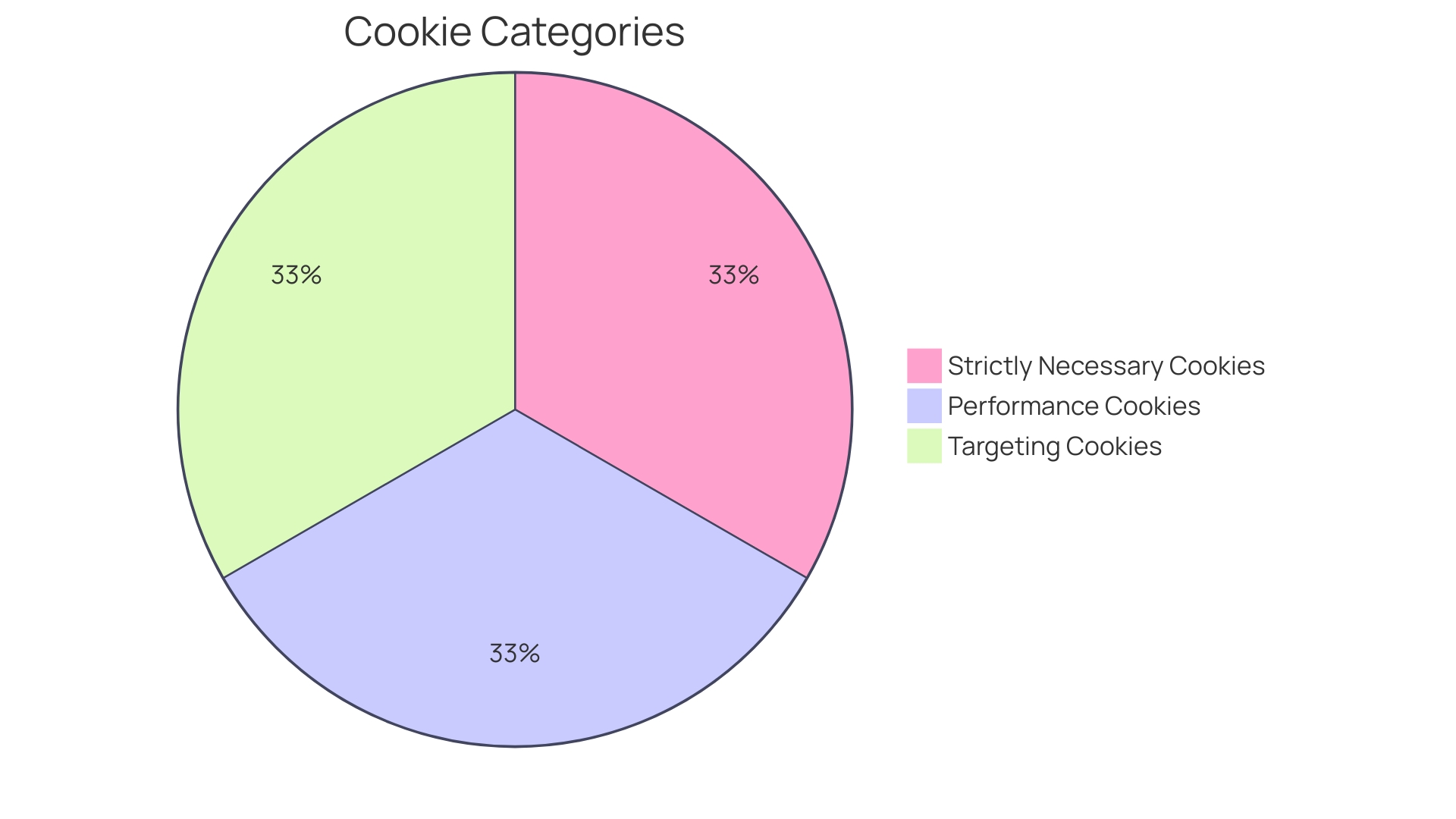Mastering Microsoft Teams Calendar: A Comprehensive Guide

Introduction
The Microsoft Teams Calendar has become an essential tool for managing group schedules and organizing events. With its suite of features tailored for virtual gatherings, it offers administrators and IT professionals the ability to create customized meetings across the organization. The recent transformation of Teams promises a faster and more efficient experience, making it a valuable asset for any operations team.
The Meet app within Teams simplifies the discovery of related content, improving team collaboration. Efficient time management is crucial, considering the staggering number of meetings that occur daily and the substantial loss organizations face due to unproductive meetings. By integrating the right tools and strategies, Microsoft Teams empowers professionals to maintain clarity and focus in their professional lives.
With its casual and engaging tone, this article explores the capabilities of Microsoft Teams Calendar and highlights the importance of leveraging its features effectively to enhance productivity.
Accessing and Navigating the Microsoft Teams Calendar
Microsoft Teams Calendar has become an indispensable tool for orchestrating group schedules and keeping tabs on pivotal events. Delving into its capabilities, you’ll discover a suite of features tailored for various types of virtual gatherings—be it standard meetings, large-scale webinars, or company-wide town halls. This versatility is especially handy for administrators and IT professionals, who can tailor meeting creation privileges across the organization, ensuring that the right people are orchestrating the right events.
Notably, Teams has undergone a transformation, reemerging as a more robust, responsive, and resource-efficient application. The freshly minted Teams app promises a smoother experience that’s up to twice as speedy while consuming half the memory—music to the ears of any operations team aiming for peak efficiency.
This rejuvenation extends to the ‘Meet app’ within Teams, which redefines interaction with your meetings’ portfolio. It simplifies the discovery of related content like chats, files, and agendas, thereby improving your team’s ability to stay on the same page. These enhancements are part of a broader effort to empower collaboration, with a suite of 35 new features and improvements announced in the October 2023 update.
What’s more, the importance of efficient time management cannot be overstated, with a staggering 11 million meetings occurring daily across the U.S. alone. Considering the substantial loss organizations face due to unproductive meetings—estimated at $37 billion annually—the need for a streamlined calendar management system is clear.
Amidst these insights, it’s essential to remember that the power of Microsoft Teams is not just in its comprehensive feature set but in how those features are utilized. As we navigate our way through myriad meetings and commitments, integrating the right tools and strategies is crucial for maintaining clarity and focus in our professional lives.
Creating and Scheduling Events in Microsoft Teams
Creating and scheduling events in Microsoft Teams Calendar is a breeze, and it’s essential to keeping your team synchronized. With the recent upgrades to Microsoft Teams, you’ll discover that the app is not only faster but also uses less memory, which means managing your group’s calendar is more efficient than ever.
First things first, let’s dive into how you can set up an event. It’s a straightforward process where you’ll kick things off by finding the calendar tab in your Teams app. From there, you can select the date and time that works best for the group. But the real magic happens when you start to utilize the sophisticated features of the Teams Calendar.
Imagine having the ability to pull in data from a variety of sources or even utilize multi-language voice support for setting up your meetings—features that became a reality as of November 2023. This kind of innovation is a game-changer for international teams or educational departments like the one Emma Davies coordinates. Her department at the Faculty of Engineering and Design streamlined their scheduling of personal tutorial sessions, which occur weekly, to ensure no student misses out on valuable one-on-one time with their tutors.
What’s more, the Teams Calendar lets you see everyone’s availability at a glance, cutting down the back-and-forth emails and messages. The integration of tasks directly into your calendar, a feature that Google Calendar has refined since May 2023, is also something to get excited about. You can now list your tasks alongside your meetings, making it easier to prioritize and manage your workload.
Remember, efficient calendar management isn’t just about the tools; it’s about the smart organization of your time and resources, as highlighted by the productivity insights from studies on workplace meetings. With the majority of employees spending up to a third of their work week in meetings, it’s critical to make every second count. The new Microsoft Teams Calendar is a testament to this, having been reimagined to help you flow through your work seamlessly.
So, as you’re setting up your next event in Teams, you’re not just inviting colleagues to another meeting; you’re leveraging the latest technological advancements to create a space where collaboration is refined, and productivity is at the forefront. It’s not just about keeping up; it’s about leading the way in operational efficiency.
Adding Events to Your Device Calendar
Integrating your Microsoft Teams Calendar with your device calendar can be a game-changer for managing your schedule across different platforms. It’s a simple process that can bring a new level of efficiency to your daily planning. Here’s a quick guide to get you started:
First, open your Microsoft Teams app and navigate to the Calendar tab. You’ll find a variety of new and exciting features that Microsoft has rolled out, including the ability to create up to 1,000 channels per team, which is perfect for organizing all your meetings and side projects.
Now, to sync with your device calendar, locate the event you want to add and select the option to share or export it. This allows you to seamlessly integrate these events into your personal device calendar, whether you’re using a Windows, Android, or iOS platform.
Moreover, if you’re looking to streamline your scheduling even further, platforms like cal.com offer an embeddable meeting scheduler that can be integrated directly into your workflow. This simplifies the process of setting up meetings and can be especially useful for those who frequently organize events.
Remember to stay updated with all the latest news and features for efficient calendar management by following tech journalists like Mike Moore and Kevin Okemwa, who provide valuable insights into the ever-evolving world of technology and productivity tools.
By keeping your Microsoft Teams and device calendars in sync, not only will you avoid the hassle of juggling multiple calendars, but you’ll also ensure that you’re always on top of your game, no matter where you are or what device you’re using.
RSVPing to Meetings and Events
Microsoft Teams is constantly evolving, and with it, the way we connect for meetings, webinars, and town halls is becoming more dynamic and efficient. Whether you’re an administrator planning these events or a participant aiming to stay engaged, understanding the distinct features and capabilities of each format is crucial.
Meetings are the bread and butter of Microsoft Teams, allowing for collaborative sessions where ideas are exchanged and decisions are made. Webinars offer a more structured setup, ideal for presentations to larger audiences, while town halls facilitate company-wide announcements and discussions.
With the latest Microsoft Teams updates, you’ll experience a more intuitive and responsive interface. The improvements include the new Teams app, which is up to twice as fast and uses 50% less memory. The Meet app enhances your interaction with meeting content, from chats to shared documents, making it simpler to find what you need when preparing to RSVP.
Josh Leporati from the Microsoft 365 Customer Advocacy Group invites you to explore this new broadcast platform. The enhanced performance and reliability ensure that your participation in meetings is as seamless as possible.
Staying on top of these updates not only aids in better planning but also ensures you’re utilizing the full potential of Microsoft Teams to foster effective group collaboration. With insights revealing that a significant amount of workweek time is spent in meetings, and with billions lost annually due to unproductive sessions, it’s clear that leveraging these tools effectively is more important than ever.

Changing Calendar Views and Navigating Dates
Navigating through your schedule can be a breeze with the right tools, and Microsoft Teams Calendar is like having a digital personal assistant at your fingertips. You can easily switch between different views according to your preference, whether it’s a traditional daily, weekly, or monthly layout, or even a custom view tailored to your unique needs. This flexibility ensures you always have a clear overview of your upcoming events and tasks, enabling you to prioritize and manage your time effectively.
For instance, Emma Davies from the Department of Electronic & Electrical Engineering found that by centralizing their scheduling and communication through Microsoft Teams, the coordination of personal tutorial sessions became more streamlined. The calendar’s ability to record attendance and notes was essential in handling the regular weekly sessions across different academic years.
Moreover, the recent overhaul of the Microsoft Teams app speaks volumes about the importance of performance and user experience. As per the latest news, the app has been redesigned to be twice as fast and consume 50% less memory, making it an even more powerful companion for managing your busy agenda. With the integration of the new Meet app, you can now quickly access all meeting-related content, such as chats, files, and shared documents, in one place.
Sharing your Outlook Calendar is just as simple, whether you’re on a Windows PC or using the web version. With a few clicks, you can give colleagues access to your schedule, enhancing collaboration and transparency within your team. As the Paperless Movement® aptly puts it, leveraging tools for their primary strengths not only maximizes their efficiency but also avoids complications that can arise from using them beyond their intended purpose.
With a global user base of 1.2 billion, Microsoft’s suite of productivity tools, including Teams and Outlook, is not only widely used but also available in 35 different languages. This accessibility removes barriers, enabling diverse teams to work together seamlessly, regardless of their preferred language. The integration between Microsoft Teams and Outlook illustrates the company’s commitment to providing a cohesive and inclusive digital workspace that caters to the needs of a modern and dynamic workforce.

Managing Community Events in Microsoft Teams
Harnessing the power of the recently updated Microsoft Teams app can significantly enhance the management of community events within your organization. With the introduction of the new Meet app, part of the overhauled Teams platform, you have a comprehensive tool at your fingertips to ensure each member of your group is well-informed and ready to engage in upcoming events. The Meet app simplifies the discovery of meeting-related content, including agendas and shared documents, which is essential for keeping everyone on the same page.
The revamped Teams app is designed to be twice as fast while using 50% less memory, meaning you can organize and navigate community events without the app slowing you down or hogging system resources. It’s been embraced by over 320 million monthly active users, and with a user-friendly interface, your group members can effortlessly track and participate in events. The app’s improved performance is backed by the use of WebView2 and React, enhancing its reliability and user experience.
Furthermore, leveraging the advancements in AI, such as multi-language voice support, can facilitate seamless communication across diverse groups. Imagine integrating a chat application powered by Generative AI, which can provide information on conference-related queries, such as details about participating companies or tips for preparation. This technology, accessible in the Teams environment, can bring a new level of efficiency and interactivity to your community events.
Community events are about connection and collaboration, and with the latest in technology provided by Teams, you’re well-equipped to create engaging and productive experiences for all participants. The key lies in staying abreast of these developments and utilizing them to foster a vibrant and connected group dynamic. So, why not take advantage of the new features today and see the difference they make in managing your community events?

Sharing and Joining Community Events
Harnessing Microsoft Teams Calendar, you can effortlessly participate in and create community events, fostering connections and collaborative opportunities with peers. Whether it be for meetings, webinars, or town halls, Teams provides a versatile platform catering to various virtual gatherings. Josh Leporati from the Microsoft 365 Customer Advocacy Group expresses excitement for the platform, inviting active community engagement.
Sharing your Outlook calendar is straightforward. On Windows, simply open Outlook, click the Calendar icon, and choose ‘Share calendar.’ This lets you pick which calendars to share. The process is similar on the web, Android, and iPhone, ensuring you’re always connected and transparent with your schedule, regardless of the device.
The latest Microsoft Teams update offers enhanced performance, with the app being twice as fast and using half the memory. This reimagined app, alongside the new Meet app, centralizes meeting content like chats and shared documents for easier access. These improvements are part of the 35 new features released, aiming to streamline your workflow and bolster collaboration within your team.
In the spirit of learning and growth, consider the insights shared by successful professionals on the importance of networking and fostering strong relationships. It’s not just about expanding your network but engaging with those who inspire and challenge you. As Spotify’s approach to applied learning suggests, informal peer-to-peer collaboration is vital for innovation and personal development, reinforcing the value of community events within Microsoft Teams.
Best Practices for Using the Microsoft Teams Calendar
Harnessing the power of Microsoft Teams Calendar can revolutionize the way you manage schedules and collaborate with your team. It’s not just about marking dates; it’s about leveraging the full potential of this tool to enhance productivity across the board. For example, think about an American football team with numerous players and coaches, all operating without the backing of a school or major organization. They successfully coordinate activities across a wide area, which is a testament to the effectiveness of using Microsoft’s suite of tools for organization and communication.
With recent updates, Microsoft Teams has been reimagined to be faster and more efficient, consuming up to 50% less memory. This translates to smoother operations without bogging down your system resources. Imagine integrating this with the newly introduced Meet app within Teams, which allows easy access to meeting content such as chats, files, and shared documents. This could be a game-changer for managing group availability and keeping everyone on the same page.
Moreover, video conferencing has become a staple in the modern workplace, especially when it comes to connecting remote team members. The essentials for successful video conferencing include devices with webcams, microphones, and speakers, along with reliable internet access and video conferencing software. Teams provide a unified platform that caters to these needs, promoting real-time collaboration.
To further streamline your workflow, the new discover feed in channels surfaces the most pressing and relevant content, making sure you never miss out on important updates or conversations. With such features at your fingertips, you can elevate your operational efficiency to new heights. By adopting these strategies and utilizing the latest enhancements in Teams, you can optimize your scheduling and ensure that your team is always in sync, no matter how large or dispersed.
Troubleshooting Common Calendar Issues
Tackling common challenges with Microsoft Teams Calendar can be a bit of a hassle, but with the right know-how, you’re set for a hassle-free experience. For instance, if you find the Files tab mysteriously inaccessible with an error stating the ‘Item might not exist or is no longer available,’ don’t panic. Start by checking the permissions and making sure the files haven’t been moved or deleted. It’s an easy fix that can get your team back on track in no time.
When it comes to email issues, like not being able to send messages to a channel’s email address, consider a couple of causes. It could be a restriction in the channel settings or an issue with the email integration. Remember, pinpointing the exact cause is key to a swift resolution.
Now, these improvements aren’t just hearsay. The latest Microsoft Teams update, which is up to two times faster and consumes 50% less memory, is a testament to the effort put into enhancing user experience. This means you can expect a smoother, more reliable calendar management, without the system bogging down.
Additionally, integrating different calendars, like Google Calendar, can streamline your scheduling. Simply add the calendar to your view and you’ll get instant updates, allowing for better planning and commitment across the board. And let’s not forget about setting reminders. They’re a fundamental feature that can be easily overlooked but utilizing them effectively ensures you’re always ahead of your schedule.
Lastly, a nugget of wisdom from the Paperless Movement® reminds us that tools have strengths and weaknesses. Microsoft Teams, reimagined to be more efficient, is leveraging its strengths to support your operations without the unnecessary bloat. Keep this in mind as you navigate through your calendar needs, and you’ll find managing your group’s availability a breeze.
Conclusion
The Microsoft Teams Calendar is a powerful tool for managing group schedules and organizing events. With recent updates, Teams has become faster and more efficient, promising a smoother experience for operations teams aiming for peak efficiency. Efficient time management is crucial, and by integrating the right tools and strategies, Microsoft Teams empowers professionals to maintain clarity and focus in their professional lives.
Creating and scheduling events in Microsoft Teams Calendar is a breeze with recent upgrades, making it faster and more memory-efficient. It offers sophisticated features like pulling in data from various sources and multi-language voice support, which is a game-changer for international teams and educational departments.
Integrating your Microsoft Teams Calendar with your device calendar brings a new level of efficiency to your daily planning. Platforms like cal.com offer further streamlining of scheduling with an embeddable meeting scheduler that can be integrated directly into your workflow.
Microsoft Teams is constantly evolving, providing a dynamic and efficient platform for meetings, webinars, and town halls. Staying updated with the latest updates and enhancements ensures that you’re utilizing its full potential for effective group collaboration.
Navigating through your schedule is made easy with Microsoft Teams Calendar. The recent overhaul of the app has made it faster and more memory-efficient, providing a powerful companion for managing your busy agenda.
Harnessing the power of the Microsoft Teams app enhances the management of community events within your organization. The Meet app simplifies the discovery of meeting-related content, ensuring everyone is well-informed and ready to engage in upcoming events.
Leveraging the power of Microsoft Teams Calendar revolutionizes the way you manage schedules and collaborate with your team. Recent updates have made Teams faster and more efficient, optimizing your scheduling and keeping your team in sync.
Tackling common challenges with Microsoft Teams Calendar is made easier with the right know-how. The latest updates enhance performance, ensuring smoother calendar management. Integrating different calendars and setting reminders are fundamental features that enhance your scheduling.
Remember to leverage the strengths of Microsoft Teams while navigating through your calendar needs for a seamless experience.
Experience the efficiency of Microsoft Teams Calendar for yourself and start creating and scheduling events effortlessly today!
